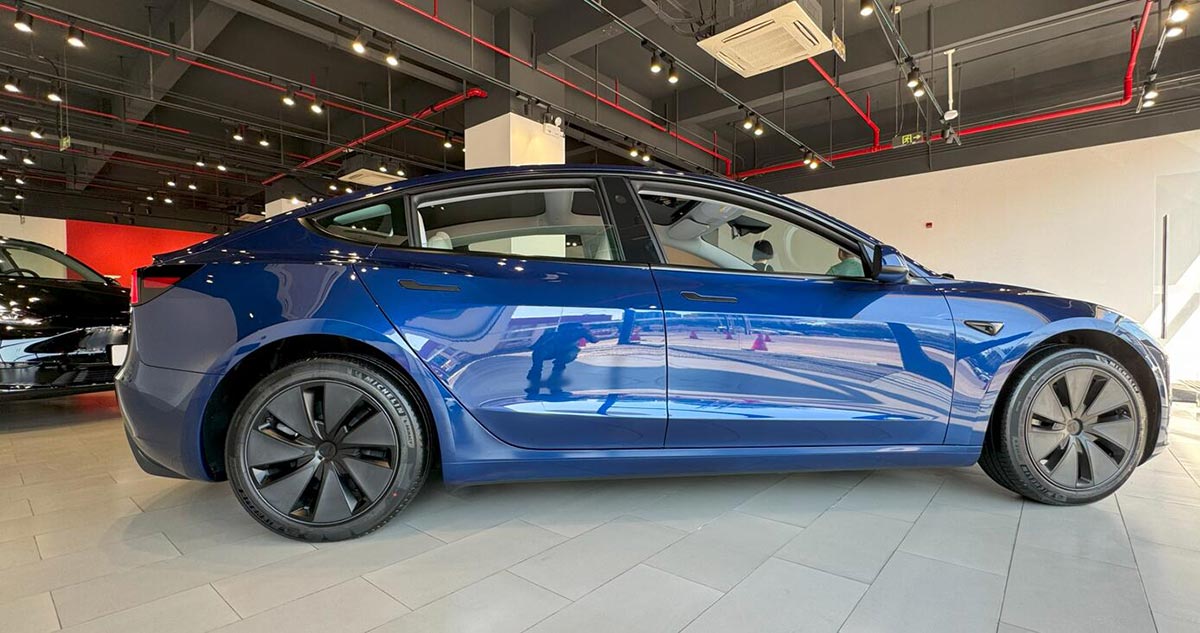Tesla Abandons Low-Cost Car Plans Amid Intense Competition from Chinese EVs
Tesla Scraps Plans for Low-Cost Car Amid Chinese EV Competition

According to Reuters, Tesla has reportedly abandoned its long-anticipated low-cost car project, which was expected to have a starting price of around $25,000. CEO Elon Musk dismissed the report as false.
The cancellation of the affordable vehicle, seen as a key element in Tesla’s transition to a mass-market automaker, was revealed today by Reuters.
Instead, Tesla will focus on developing self-driving robotaxis using the same compact vehicle platform, as per Reuters sources.
This decision marks a significant departure from Tesla’s previously stated mission of providing affordable electric vehicles to the broader market, a goal frequently emphasized by Musk, Reuters notes.
As recently as January, Musk informed investors of plans to commence production of the budget-friendly model at Tesla’s Texas facility by the second half of 2025.
Musk refuted the latest Reuters report, dismissing it as false via his platform, previously known as Twitter, stating, “Reuters is lying (again).”
Tesla’s current entry-level model, the Model 3 sedan, starts at approximately $39,000 in the US. The now-scrapped low-cost vehicle, often referred to as the Model 2, was anticipated to start at around $25,000, according to Reuters.
This abrupt shift comes amidst intense global competition from Chinese EV manufacturers, flooding the market with vehicles priced as low as $10,000, the report highlights.
Sources indicate that Tesla communicated the decision to cease development of the Model 2 during a late February meeting attended by numerous employees, Reuters reports.
While Tesla is doubling down on robotaxi initiatives, production for the Model 2 falls significantly short of expectations, according to sources cited in the report.
Internally, Tesla referred to the affordable car project as NV91 and externally as H422 in discussions with suppliers, Reuters reveals, citing insider information and company communications.
Messages sent to employees by an unnamed Tesla program manager referenced these codenames in discussions surrounding the project’s termination. A message dated March 1 instructed suppliers to cease all further activities related to H422/NV91.
Another message on the same day thanked engineering staff for their contributions and urged them to document their findings, as per Reuters.
Musk had previously stated at Tesla’s 2020 Battery Day that a self-driving EV priced at $25,000 would be achievable by 2023. However, despite sporadic rumors, this lower-priced model has yet to materialize.
At an investor event in early March 2023, Tesla’s vice president of automotive engineering reiterated the company’s intent to produce its next-generation vehicle at half the cost of the Model 3 or Model Y.
This affordable model is crucial to Tesla’s ambitious sales targets. Musk had previously suggested in 2022 that Tesla could establish 10 to 12 new factories to ramp up production, aiming to sell 20 million EVs annually by 2030.
Last April, Chinese media outlet 36kr reported that Tesla’s budget model would be a smaller version of the Model Y crossover, with plans for annual capacity of up to 4 million units. The report outlined capacity allocations across Tesla’s North American factories, as well as those in Berlin, Germany, and Shanghai, China.

 Auto in China
Auto in China